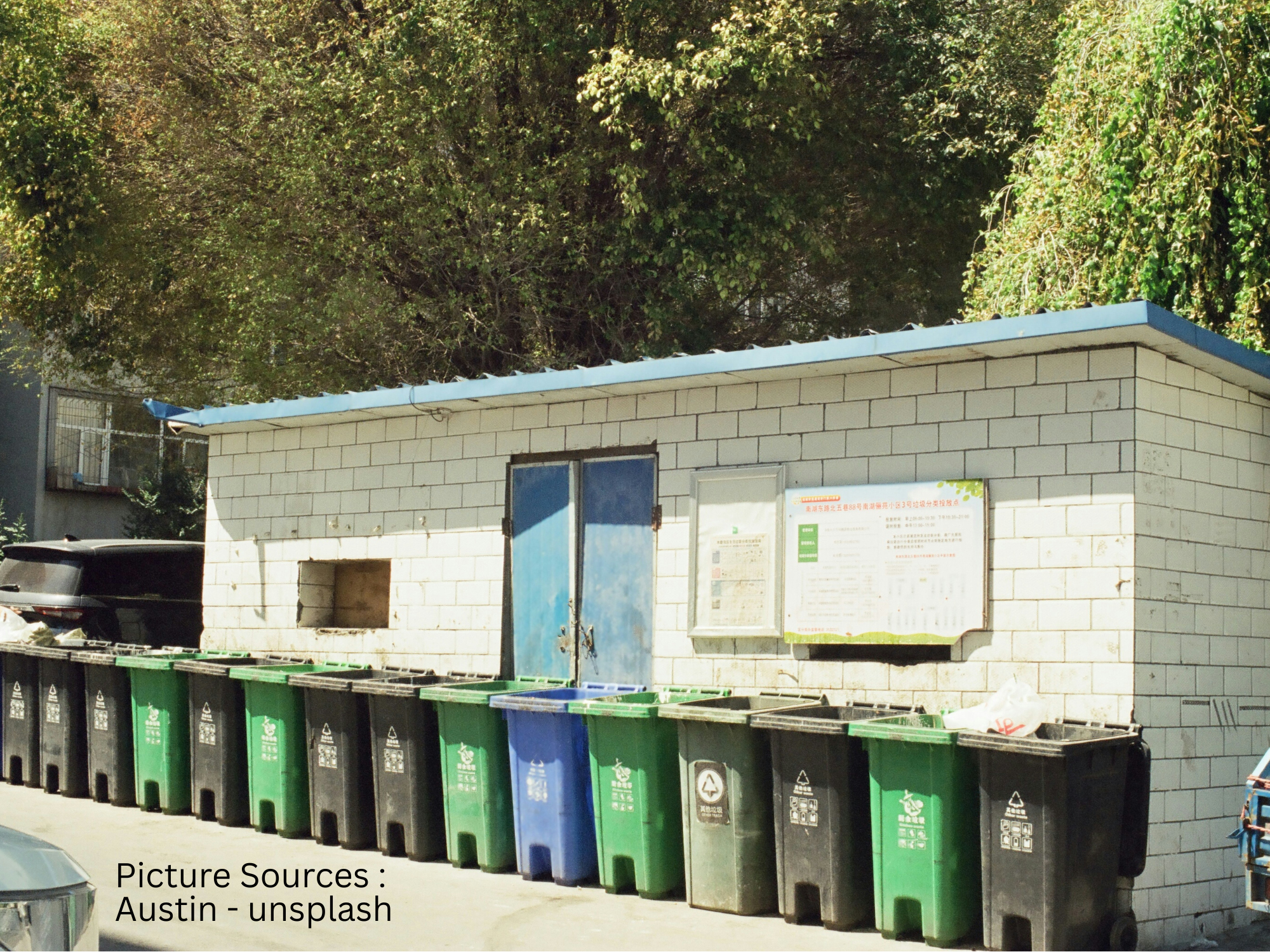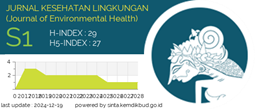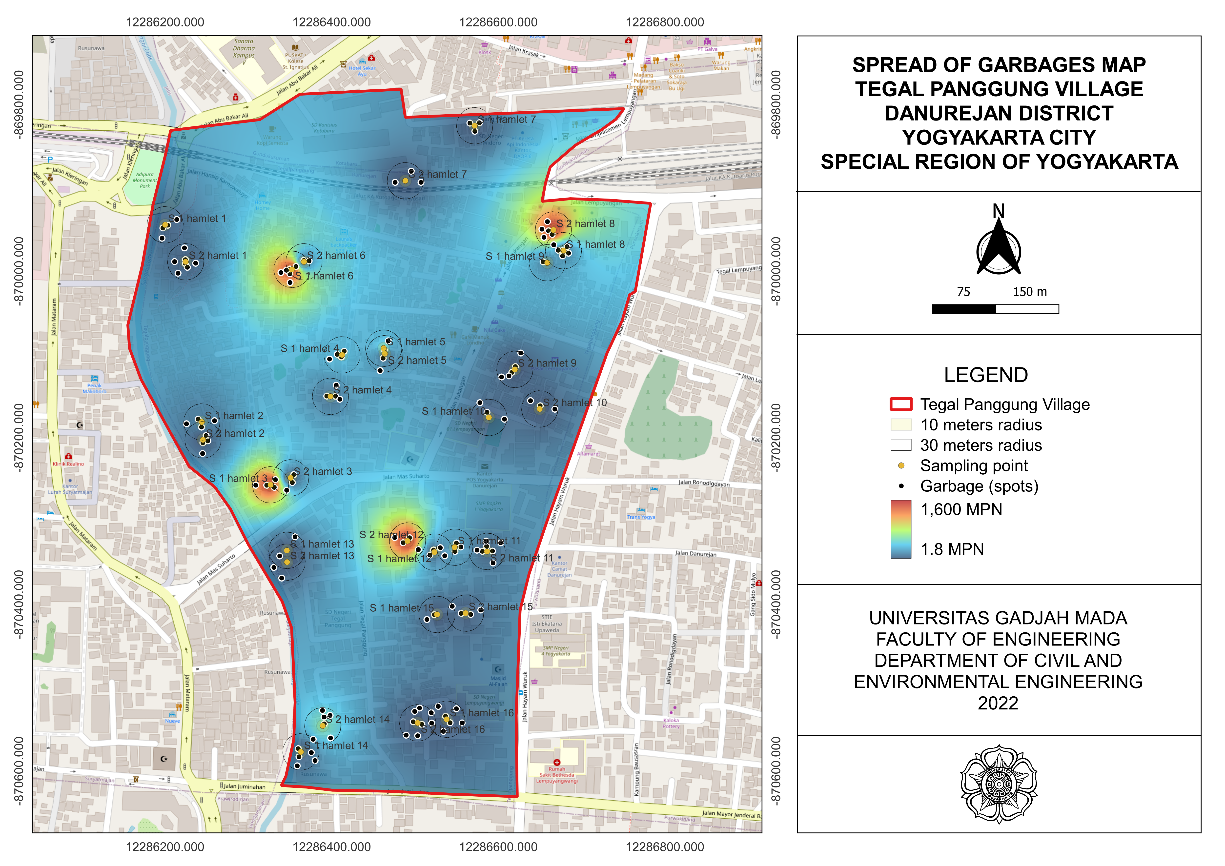A Case Study of Waste Bank Implementation in an Elementary School in Bonang Sub-District, Demak Regency

Introduction: The community's behavior, perceptions, and willingness to pay (WTP) are vital in forming and implementing integrated waste management. Thus, zero waste theory advocates the need for research on perceptions, behavior, and WTP for school waste management. This study analyzes school residents' perceptions, behavior, and WTP regarding waste management. Methods: This study used a mixed-methods sequential explanatory design, combining quantitative and qualitative approaches. The study was conducted at SDN Betahwalang, selected purposively due to its active waste bank program. A total of 86 students and 75 school community members were surveyed. Quantitative data were analyzed using crosstabs and the Contingent Valuation Method (CVM), while qualitative data were obtained through in-depth interviews with key stakeholders. Results and Discussion: This study used a mixed-methods sequential explanatory design. The research was conducted at SDN Betahwalang, purposively selected for its active school waste bank program. The variables measured included students’ socio-economic characteristics, perception, environmental behavior, and willingness to pay for waste bank development. A total of 86 students and 75 school community members were surveyed. Data were analyzed using crosstabs and the Contingent Valuation Method, supported by qualitative insights from in-depth interviews. Conclusion: This study concludes that integrating environmental education through both formal and non-formal approaches effectively improves students’ knowledge, perception, and behavior toward waste management. Furthermore, the school community shows strong support for waste bank development, as indicated by their willingness to pay. These findings highlight the importance of institutional synergy and continuous environmental education in promoting sustainable waste practices in schools.
Huynh TL, Le TKO, Wong YJ, Phan CT, Trinh TL. Towards Sustainable Composting of Source-Separated Biodegradable Municipal Solid Waste—Insights from Long an Province, Vietnam. Sustainability. 2023;15(17):13-24. https://doi.org/10.3390/su151713243
Satori M, Amaranti R, Srirejeki Y. Sustainability of Waste Bank and Contribution of Waste Management. IOP Conf Ser Mater Sci Eng. 2020;830(3):1-10. https://doi.org/10.1088/1757-899X/830/3/032077
Awasthi P, Chataut G, Khatri R. Solid Waste Composition and its Management: A Case Study of Kirtipur Municipality-10. Heliyon. 2023;9(11):1-10. https://doi.org/10.1016/j.heliyon.2023.e21360
Roitman S, Rukmana D. Routledge Handbook of Urban Indonesia. 1st ed. London: Routledge; 2022. https://doi.org/10.4324/9781003318170
Setiadi S, Sumaryana A, Bekti H, Sukarno D. The Flood Management Policy in Bandung City: Challenges and Potential Strategies. Cogent Soc Sci. 2023;9(2):228-243. https://doi.org/10.1080/23311886.2023.2282434
Elizabeth MZ, Sholihan S, Masrohatun M, Safitri RM, Ni’matul N. Why Policies and Community Don’t Greet Each Other: A Study of Semarang City Policies and Community Initiatives in Waste Management. Asian Polit Policy. 2025;17(2):1-12. https://doi.org/10.1111/aspp.70009
Mostaghimi K, Behnamian J. Waste Minimization Towards Waste Management and Cleaner Production Strategies: A Literature Review. Environ Dev Sustain. 2023;25(11):59–66. https://doi.org/10.1007/s10668-023-02795-0
Mor S, Ravindra K. Municipal Solid Waste Landfills in Lower- and Middle-Income Countries: Environmental Impacts, Challenges and Sustainable Management Practices. Process Saf Environ Prot. 2023;174:510–530. https://doi.org/10.1016/j.psep.2023.04.014
Azevedo BD, Scavarda LF, Caiado RGG, Fuss M. Improving Urban Household Solid Waste Management in Developing Countries Based on The German Experience. Waste Manag. 2021;120:72–83. https://doi.org/10.1016/j.wasman.2020.11.001
Ukkonen A, Sahimaa O. Weight-Based Pay-As-You-Throw Pricing Model: Encouraging Sorting in Households Through Waste Fees. Waste Manag. 2021;135:372–80. https://doi.org/10.1016/j.wasman.2021.09.011
Fadhullah W, Imran NIN, Ismail SNS, Jaafar MH, Abdullah H. Household Solid Waste Management Practices and Perceptions Among Residents in the East Coast of Malaysia. BMC Public Health. 2022;22(1):1-20. https://doi.org/10.1186/s12889-021-12274-7
Debrah JK, Vidal DG, Dinis MAP. Raising Awareness on Solid Waste Management Through Formal Education for Sustainability: A Developing Countries Evidence Review. Recycling. 2021;6(1):1-21. https://doi.org/10.3390/recycling6010006
Kuya RM, Oindo BO, Long’ora AE. Influence of Levels of Awareness, Willingness to Pay, and Incentives on Solid Waste Management Practices by Commercial Enterprises in Kakamega Town. Eur J Environ Earth Sci. 2022;3(1):7–13. https://repository.maseno.ac.ke/handle/123456789/5012
Yusuf R, Fajri I. Differences in Behavior, Engagement and Environmental Knowledge on Waste Management for Science and Social Students Through the Campus Program. Heliyon. 2022;8(2):1-14. https://doi.org/10.1016/j.heliyon.2022.e08912
Wu L, Zhu Y, Zhai J. Understanding Waste Management Behavior Among University Students in China: Environmental Knowledge, Personal Norms, and the Theory of Planned Behavior. Front Psychol. 2022;12(771723):1-13. https://doi.org/10.3389/fpsyg.2021.771723
Ridayani, Saputra N, Siagian N, Owon RAS, Rawadhy I. The Correlation of Environmental Education, Environmental Knowledge, Environmental Involvement, and Waste Management Behavior. IOP Conf Ser Earth Environ Sci. 2022;1105(012008):1-7. https://doi.org/10.1088/1755-1315/1105/1/012008
Abushammala H, Ghulam ST. Impact of Residents’ Demographics on Their Knowledge, Attitudes, and Practices Towards Waste Management at the Household Level in the United Arab Emirates. Sustainability. 2022;15(685):1-14. https://doi.org/10.3390/su15010685
Edeme RK, Nkalu CN. Household Preferences and Willingness to Pay for Waste Management Services in Nsukka Urban Area. J Solid Waste Technol Manag. 2020;46(3):196–205. https://doi.org/10.5276/JSWTM/2020.196
Halkos G, Matsiori S. Environmental Attitudes and Preferences for Coastal Zone Improvements. Econ Anal Policy. 2018;58(002):153–166. https://doi.org/10.1016/j.eap.2017.10.002
Serenius S. Designing for Nature: Exploring Scientific and Commercial Views on Integrating Biodiversity and Policy Into Industrial-Scale Solar Energy Developments in Finland. Uppsala University; 2025. https://www.diva-portal.org/smash/record.jsf?pid=diva2%3A1968656
Lekena LL. The Use of Institutional Research Outputs by University Managers: An Embedded Case Study of A University in South Africa. Stellenbosch University; 2024.
Phan TTT, Nguyen VV, Nguyen HTT, Lee CH. Integrating Citizens’ Importance-Performance Aspects Into Sustainable Plastic Waste Management in Danang, Vietnam. Sustainability. 2022;14(10324):1-17. https://doi.org/10.3390/su141610324
Zebua RSY, Sunarti. The Implementation of Character Building to Improve Resident Participation in Waste Management. IOP Conf Ser Earth Environ Sci. 2021;810(012025):1-7. https://doi.org/10.1088/1755-1315/810/1/012025
Qing C, Zhou W, Song J, Deng X, Xu D. Impact of Outsourced Machinery Services on Farmers’ Green Production Behavior: Evidence from Chinese Rice Farmers. J Environ Manage. 2023;327(116843):1-10. https://doi.org/10.1016/j.jenvman.2022.116843
Ferreira L, Oliveira T, Neves C. Consumer’s Intention to Use and Recommend Smart Home Technologies: The Role of Environmental Awareness. Energy. 2023;263(125814):1-11. https://doi.org/10.1016/j.energy.2022.125814
Zeng Z, Zhong W, Naz S. Can Environmental Knowledge and Risk Perception Make a Difference? The Role of Environmental Concern and Pro-Environmental Behavior in Fostering Sustainable Consumption Behavior. Sustainability. 2023;15(4791):1-23. https://doi.org/10.3390/su15064791
Almulhim AI, Abubakar IR. Understanding Public Environmental Awareness and Attitudes toward Circular Economy Transition in Saudi Arabia. Sustainability. 2021;13(18):1-15. https://doi.org/10.3390/su131810157
Si W, Jiang C, Meng L. The Relationship Between Environmental Awareness, Habitat Quality, and Community Residents’ Pro-Environmental Behavior—Mediated Effects Model Analysis Based on Social Capital. Int J Environ Res Public Health. 2022;19(20):1-20. https://doi.org/10.3390/ijerph192013253
Handoyo B, Astina IK, Mkumbachi RL. Students’ Environmental Awareness and Pro-Environmental Behaviour: Preliminary Study of Geography Students at State University of Malang. IOP Conf Ser Earth Environ Sci. 2021;683(1):1-8. https://doi.org/10.1088/1755-1315/683/1/012049
Mónus F. Environmental Education Policy of Schools and Socioeconomic Background Affect Environmental Attitudes and Pro-Environmental Behavior of Secondary School Students. Environ Educ Res. 2022;28(2):169–176. https://doi.org/10.1080/13504622.2021.2023106
Kirbiš A. Environmental Attitudes among Youth: How Much Do the Educational Characteristics of Parents and Young People Matter? Sustainability. 2023;15(15):1-14. https://doi.org/10.3390/su151511921
Kanada M, Norman P, Kaida N, Carver S. Linking Environmental Knowledge, Attitude, and Behavior with Place: A Case Study for Strategic Environmental Education Planning in Saint Lucia. Environ Educ Res. 2023;29(7):929–940. https://doi.org/10.1080/13504622.2022.2074376
Krajnc D, Kovačič D, Žunec E, Brglez K, Kovačič LR. Youth Awareness and Attitudes towards a Circular Economy to Achieve the Green Deal Goals. Sustainability. 2022;14(19):1-25. https://doi.org/10.3390/su141912050
Tamar M, Wirawan H, Arfah T, Putri RPS. Predicting Pro-Environmental Behaviours: The Role of Environmental Values, Attitudes and Knowledge. Manag Environ Qual Int J. 2020;32(2):328–343. https://doi.org/10.1108/MEQ-12-2019-0264
Bala R, Singh S, Sharma KK. Relationship Between Environmental Knowledge, Environmental Sensitivity, Environmental Attitude and Environmental Behavioural Intention – A Segmented Mediation Approach. Manag Environ Qual Int J. 2023;34(1):119–136. https://doi.org/10.1108/MEQ-08-2021-0202
Ramzan M, Javaid ZK, Kareem A, Mobeen S. Amplifying Classroom Enjoyment and Cultivating Positive Learning Attitudes among ESL Learners. Pak J Humanit Soc Sci. 2023;11(2):298–308. https://doi.org/10.52131/pjhss.2023.1102.0522
Turan Z, Kucuk S, Cilligol KS. The University Students’ Self-Regulated Effort, Flexibility and Satisfaction in Distance Education. Int J Educ Technol High Educ. 2022;19(1):35-44. https://doi.org/10.1186/s41239-022-00342-w
Baierl TM, Kaiser FG, Bogner FX. The Supportive Role of Environmental Attitude for Learning About Environmental Issues. J Environ Psychol. 2022;81(101799):1-11. https://doi.org/10.1016/j.jenvp.2022.101799
Firmanshah MI, Abdullah N, Fariduddin MN. The Relationship of School Students’ Environmental Knowledge, Attitude, Behavior, and Awareness Toward the Environment: A Systematic Review. Int J Acad Res Progress Educ Dev. 2023 Jan 12;12(1):471-488. http://dx.doi.org/10.6007/IJARPED/v12-i1/15707
Ayeleru OO, Fewster-Young N, Gbashi S, Akintola AT, Ramatsa IM, Olubambi PA. A Statistical Analysisof Recycling Attitudes and Behaviours Towards Municipal Solid Waste Management: A Case Study of The University of Johannesburg, South Africa. Clean Waste Syst. 2023;4(100077):1-10. https://doi.org/10.1016/j.clwas.2023.100077
Kim N, Lee K. Environmental Consciousness, Purchase Intention, and Actual Purchase Behavior of Eco-Friendly Products: The Moderating Impact of Situational Context. Int J Environ Res Public Health. 2023;20(7):1-17. https://doi.org/10.3390/ijerph20075312
Habibzadeh H, Namadi F, Mahdi‐Akhgar M. Horizontal Violence During the Covid ‐19 Pandemic and its Impact on Turnover Tntention: A Cross-sectional study. Nurs Open. 2023;10(4):2631–2647. https://doi.org/10.1002/nop2.1523
Viljoen JMM, Schenck CJ, Volschenk L, Blaauw PF, Grobler L. Household Waste Management Practices and Challenges in a Rural Remote Town in the Hantam Municipality in the Northern Cape, South Africa. Sustainability. 2021;13(11):1-24. https://doi.org/10.3390/su13115903
Massoud M, Lameh G, Bardus M, Alameddine I. Determinants of Waste Management Practices and Willingness to Pay for Improving Waste Services in a Low-Middle Income Country. Environ Manage. 2021;68(2):198–209. https://doi.org/10.1007/s00267-021-01472-z
Fattah MdA, Rimi RA, Morshed SR. Knowledge, Behavior, and Drivers of Residents’ Willingness to Pay for A Sustainable Solid Waste Collection and Management System in Mymensingh City, Bangladesh. J Mater Cycles Waste Manag. 2022;24(4):1551–1564. https://doi.org/10.1007/s10163-022-01422-9
Lee I, Tipoe E. Education and Ideological Polarisation: Cross‐country Evidence and Recommendations for Higher Education. Br Educ Res J. 2025;51(1):369–393. https://doi.org/10.1002/berj.4081

This work is licensed under a Creative Commons Attribution-NonCommercial-ShareAlike 4.0 International License.
1. Copyright of all journal manuscripts is held by the Jurnal Kesehatan Lingkungan.2. Formal legal provisions to access digital articles of electronic journal are subject to the provision of the Creative Commons Attribution-ShareAlike license (CC BY-NC-SA), which means that Jurnal Kesehatan Lingkungan is rightful to keep, transfer media/format, manage in the form of databases, maintain, and publish articles.
3. Published manuscripts both printed and electronic are open access for educational, research, and library purposes. Additionally, the editorial board is not responsible for any violations of copyright law.
JKESLING by UNAIR is licensed under a Creative Commons Attribution-ShareAlike 4.0 International License.







































